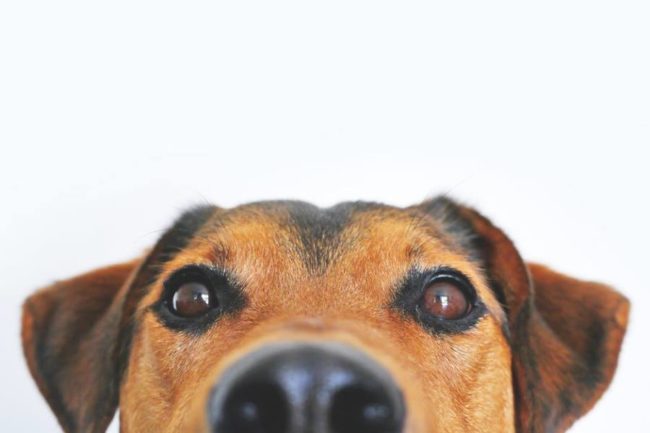Having a pet is usually an enjoyable thing to do but at times it may be characterized by constant barking. You may be tired yelling orders and are now at your wit’s end.
Training an aggressive dog can be a challenge. But by using the right techniques, therapies and natural medicines, you can improve your outcomes.
Here is a guide to help you with training an aggressive dog.
Aggression in dogs
Dogs are our friends, pets, and protectors. It’s normal for a dog to be a dog. However, there are some instances whereby there may be signs of aggression in a dog. An aggressive domesticated dog is hard to handle as it can go on a destructive path and it causes concern, especially in public, since it may attack other people or pets.
You can detect an aggressive dog if it waves its tails frantically, tucks its tail, growls, bites and snarls, curls its lips, lunges at an object or person, barks and snaps, crouches or if it stares directly with its head and tail up.
Inter-Dog Aggression
Although it may be considered normal for dogs to be aggressive towards each other, such situations may play out and have a negative outcome. This type of aggression normally happens between dogs of the same gender. The dog (s) may stare, bark, snarl or block the other from coming close to their space.
Lack of socialization, past traumatic experience with another dog, or a dog owner’s actions such as showing preference of one dog over another may cause inter-dog aggression. Although dog-fighting is illegal, it does happen as an underground activity. The dogs that are rescued from such dark activities do display signs of aggression.
Some dog breeds are also known to be more aggressive than others. Male dogs also become aggressive when searching for a mate and when protecting their territory.
Tips to Consider While Training an Aggressive Dog
After getting answers to the question, ‘Why is my dog aggressive’, you may then be able to tackle the root cause after you get the right remedy to the next big question, ‘How do I manage dog aggression’.
While diverting your dog from the real or perceived triggers of aggression may be a temporary solution, you may consider the following ways of training an aggressive dog to prevent the escalation of such aggression.
Use a Leash for Restraining
When you put a leash on your dog, you can control its movements, as it interacts with other canines. Having a good hold of it and giving it instructions may help in reducing its bad behavior towards other people or dogs. This means more enjoyable walks for both of you!
Consult a Vet
A vet will be able to study your pet and determine if the aggression in your dog is caused by a medical condition. A check-up will help in finding out if the dog has acute pains, which are brought about by an acute condition.
Doing an MRI scan will enable you to detect neurological problems. You may then begin with the treatment of the cause factor. If your pet has neurological problems such as brain tumors, encephalitis, or epilepsy or if it suffers from hypothyroidism, it may show signs of aggression.
Identify What Triggers Aggression in Your Dog
To manage dog aggression, you will have to keenly watch your dog and identify what causes it to be aggressive. A dog may become aggressive when it is afraid, protecting its food or territory and when it wants to display its dominance.
You may then train it on how to behave whenever it is becoming aggressive when in the situations which trigger its aggression. You may also have to avoid frequent exposure of your dog to situations which make it aroused and aggressive.
Socialize Puppies Properly
Puppies are meant to pass the growth process and it should be done properly. The major stage of development on puppies is when they are between 3-12 weeks old. If you socialize your puppy or puppies properly, they will be able to develop good traits.
By exposing them to a good interaction with people, animals, and environments, this will be a good training ground and they will learn and develop good character traits. Some puppy classes are available and you can enroll in such a program to help them learn good behavior.
Reduce Your Dog’s Guarding Behavior
At times, you would just like to relax and not have to call and calm your dog each and every time that it gets aggressive and barks at any and every single movement or form of life.
Therefore, you may create opportunities that reduce your dog’s role as a protector. You can consider having indoors grass, an indoor potty and also putting it in a different location when you are receiving guests.
Desensitize Your Dog
You can use the desensitization technique to reduce aggression that is fear-related. This includes mildly exposing your dog to the fear factor that triggers their aggression.
The soft exposure, over time, will reduce their anxiety when they are in the presence of the trigger. You should continually reward your dog for its good behavior so as to reinforce the good outcome.
Positive Reinforcement
Positive reinforcement aims to help your dog learn good behavior whenever it is in the presence of the factors that trigger its anxiety and aggression. If it behaves negatively, you should show that you are not happy with its behavior.
On the other hand, if your dog achieves a positive outcome, reward it by congratulating it or offer it with a good treat of food. Please note that you should not punish your dog by treating it badly, yelling or hitting it. They will interpret it as displaying aggression is an appropriate thing to do.
Use a Professional Trainer
In some cases, you may need the help of someone who has mastered dogs and how to calm them. If you have a hard time controlling your dog and it at times displays redirected aggression towards you when you try to stop it from being hostile towards others, you can use the services of a professional dog trainer.
A professional trainer will be able to understand your dog’s body language and the factors that trigger their aggressive behavior. Thereafter, they will walk you through on how to manage your dog and the situations in which it is behaving aggressively.
Be a Pack Leader
Dog-to-dog aggression requires the dog owner to step in and step up. Therefore, this may be managed if you instruct them and show them how to behave and protect your boundaries properly. You will also have to know the difference between normal canine play and unusual aggression.
Use Natural Remedies
CBD Oil for Dogs with Aggression is another solution which will come in handy because training a dog or avoiding the triggers may not be a fully effective remedy. The use of natural phytocannabinoid oil is beneficial and effective when it comes to managing anxiety in dogs. Additionally, if the aggression is triggered by pain or inflammation, this organic solution works to calm your dog.
Although it is safe for your pet, you should only administer the dose that the manufacturer or your vet recommends. CBD oil for dogs comes with a dropper that helps you to administer the drug with relative ease. The product may come in the form of cookies or liquid form.
Hemp dog treats come in different flavors which will be exciting to your dog’s taste buds. The ingredients are easily absorbed in the body and also help in improving your dog’s immunity. You will be able to see good improvement in your dog’s behavior in a few days.
CBD oil is purely organic, containing no chemicals or additives and is extracted from legally-grown hemp stalks and seeds. This product has been highly rated and reviewed by many dog owners.
Understand Your Dog
As a pet owner, you should make a conscious effort to understand your dog and master how it acts when exposed to various situations. By helping it to deal with the real or perceived fears or threats and causes of aggression, you can help to manage its aggressive behavior. Also, if you know it may possibly harm your visitors, you may avoid them interacting directly or request that they avoid petting it.
It will also be your responsibility to avoid situations in which your dog is left unattended. It will take your effort and that of your trainer to have the pet eventually learn how to settle and be calm. You should also ensure that you stay up-to-date with all the vaccinations for your pet to avoid rabies and other risks.
Training an Aggressive Dog Shouldn’t Be Challenging
Training an aggressive dog takes a lot of time and effort and requires your full support. You can create a safe space for your dog and others and you can use safe methods to calm your dog.









